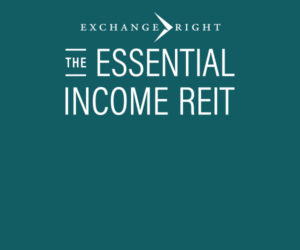Different Types of Fees and How They Impact Shareholders – Part 3
November 3, 2016 | by Beth Glavosek | Blue Vault
The following descriptions and definitions can help both financial advisors and investors alike to understand the various fees that impact shareholders in nontraded REITs, from the initial public offering of common shares until the full-liquidity event.

These fees can be classified in three categories: Upfront, Ongoing and/or Portfolio-Related, and Full-Cycle Related.
In this blog post, we’ll look at the Full-Cycle Related fees that shareholders may experience depending on the product offering and share class purchased.
Disposition Fees or Commissions
These are fees paid to the advisor for “substantial assistance in the sale of assets,” which may include sale of a single asset or a portfolio sale, merger, or business combination transaction. The fee is based upon the contract sales price of the assets sold, including mortgage-backed securities. The fees may be on a sliding scale, with a lower percentage for higher contract sales prices.
For every share class among the effective REITs as of September 2016, these fees ranged from 0.00% to 3.00%, with a median of 1.50%.
Subordinated Performance Fees
These fees are intended to give sponsors an incentive to maximize shareholder returns over the full life cycle of the nontraded REIT program. They are typically subject to a “hurdle rate” or minimum average shareholder return (from 5% to 8% for the effective REITs as of September 2016.)
A “preferred return” kicks in after common stockholders have received a noncompounded return on the gross investment amount above the hurdle rate. The noncompounded return can be delivered in any form of distributions, including a return of capital. Once the hurdle rate is achieved, the advisor is entitled to receive a percentage of the net cash flows from continuing operations, net sales proceeds, net financing proceeds or other. The percentage of the subordinated performance fee ranges from 10% to 25% for the effective REITs as of September 2016.
In order for this fee to apply, the REIT will be in the liquidation stage, selling some or all of its assets, or otherwise liquidating its portfolio via listing or merger, to give shareholders the noncompounded “preferred return.”
Subordinated Incentive Fee/Incentive Plan Compensation
One REIT program lists this fee, which is based upon the market value of common stock upon a listing or merger. For this REIT, the advisor receives a subordinated incentive fee of 15% of the return over and above a cumulative, noncompounded return above 6.0% per year to shareholders. Four other REITs have incentive plans involving restricted common share awards.
Subordinated Distribution Due Upon Termination of Advisory Agreement
For seven offerings of effective REITs as of September 2016, the advisor is entitled to receive a similar incentive fee when the advisory agreement is terminated or not renewed of 15% of the amount over and above the preferred return rate as defined in the subordinated incentive fee/incentive plan compensation above.
Subordinated Incentive Listing Distribution
For 14 offerings of effective REITs as of September 2016, the advisor is entitled to receive a listing incentive fee of 15% if the REIT’s lists its common shares on a national exchange for an amount over and above the preferred return. This rate is defined as the noncompounded return to shareholders in excess of a hurdle rate based upon the market value of the listed shares plus distributions over the life of the REIT.
Subordinated Distribution Due Upon Extraordinary Transaction
Similar to the subordinated distribution due to listing, this fee is to be paid to the advisor upon a merger or liquidation and will be calculated as a percentage (15%) of the excess return to common shareholders above the preferred return. This subordinated distribution is in the prospectuses of five offerings among those effective REITs as of September 2016.
In upcoming blog posts, we’ll look at additional topics surrounding fees that affect the nontraded REIT and BDC industry.
Previous Posts in this series on Nontraded REIT Fees
Different Types of Fees and How They Impact Shareholders – Part 2
Different Types of Fees and How They Impact Shareholders
Economies of Scale in Nontraded REIT Offerings and Effects of Fee Discounts
What’s Up (or Down) with Fees?











